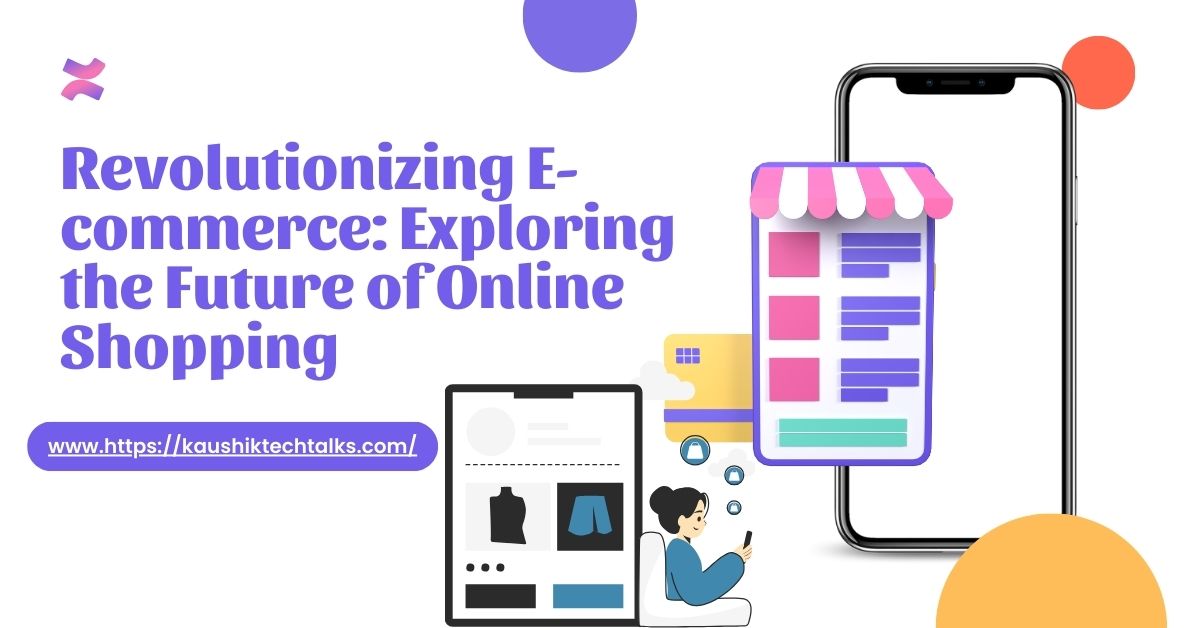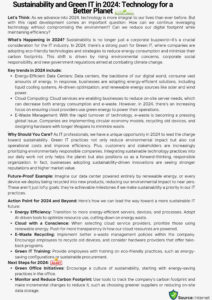

Introduction:
The landscape of e-commerce is continuously evolving, driven by technological advancements, changing consumer behaviors, and shifting market dynamics. From the rise of mobile commerce and social commerce to the integration of artificial intelligence and augmented reality, the future of online shopping promises to be innovative and transformative. In this article, we will delve into the emerging trends and technologies shaping the future of e-commerce, revolutionizing the way consumers shop, businesses operate, and markets function.
- Mobile Commerce (M-commerce) Revolution:
Mobile commerce, or M-commerce, has emerged as a dominant force in the e-commerce landscape, fueled by the widespread adoption of smartphones and tablets worldwide. With the convenience of anytime, anywhere access to online shopping platforms, consumers are increasingly turning to mobile devices to browse, shop, and make purchases on the go. In 2024, M-commerce is expected to continue its upward trajectory, driven by advancements in mobile payment technologies, seamless checkout experiences, and personalized shopping recommendations.
Moreover, the integration of augmented reality (AR) and virtual reality (VR) technologies into mobile shopping apps is enhancing the online shopping experience, enabling users to visualize products in their physical environment before making a purchase. As mobile devices become more powerful and ubiquitous, businesses have the opportunity to leverage M-commerce platforms to reach and engage with consumers effectively, driving sales, and fostering brand loyalty in an increasingly competitive market.
- Sustainability in E-commerce:
With growing environmental concerns and a heightened awareness of corporate social responsibility, sustainability has emerged as a key consideration for consumers when making purchasing decisions. In response, e-commerce companies are increasingly prioritizing sustainability initiatives, incorporating eco-friendly practices into their supply chains, packaging, and operations. In 2024 and beyond, sustainability in e-commerce is expected to gain further momentum, driven by consumer demand for ethically sourced products, carbon-neutral shipping options, and waste reduction measures.
Moreover, emerging technologies such as blockchain and Internet of Things (IoT) are being leveraged to enhance transparency and traceability in supply chains, enabling consumers to make informed choices about the environmental impact of their purchases. By adopting sustainable practices and embracing innovation, e-commerce companies have the opportunity to not only reduce their carbon footprint but also differentiate themselves in the market, attract environmentally conscious consumers, and drive long-term business growth.
- Personalization and AI-driven Shopping Experiences:
Personalization has become a cornerstone of successful e-commerce strategies, enabling businesses to deliver tailored shopping experiences that resonate with individual preferences, behaviors, and needs. With the proliferation of data analytics and artificial intelligence (AI) technologies, e-commerce platforms can analyze vast amounts of customer data in real-time, segment audiences, and deliver personalized product recommendations, promotions, and content across various touchpoints.
In 2024, AI-driven personalization is expected to reach new heights, with advancements in natural language processing (NLP), predictive analytics, and machine learning algorithms. By leveraging AI-powered chatbots and virtual assistants, e-commerce companies can offer personalized customer support, resolve queries, and guide users through the purchase journey in a seamless and efficient manner. Moreover, AI-driven product recommendation engines can analyze user behavior, browsing history, and purchase patterns to anticipate customer preferences and suggest relevant products, increasing conversion rates and revenue opportunities.
- Enhanced Customer Engagement through Social Commerce:
Social commerce has emerged as a powerful tool for enhancing customer engagement and driving sales in the e-commerce space. With the widespread use of social media platforms like Instagram, Facebook, and TikTok, consumers are increasingly turning to these channels not only for social interaction but also for product discovery and shopping inspiration. In 2024, the integration of e-commerce features into social media platforms is expected to accelerate, blurring the lines between social networking and online shopping.
By leveraging social commerce functionalities such as shoppable posts, live streaming, and influencer collaborations, e-commerce companies can create immersive and interactive shopping experiences that resonate with today’s digitally savvy consumers. For instance, live streaming shopping events allow brands to showcase products in real-time, engage with audiences through interactive Q&A sessions, and drive impulse purchases through limited-time promotions and exclusive offers.
Moreover, user-generated content (UGC) plays a crucial role in shaping purchasing decisions, with consumers relying on reviews, ratings, and testimonials from their peers to inform their buying choices. By encouraging user-generated content creation and leveraging social proof, e-commerce brands can build trust, credibility, and authenticity, driving conversion rates and fostering long-term customer relationships.
- Seamless Omnichannel Experiences:
In an increasingly connected world, consumers expect seamless and consistent experiences across multiple channels and touchpoints, whether online or offline. As such, the integration of omnichannel retailing has become essential for e-commerce companies looking to meet the evolving needs and preferences of today’s omnichannel shoppers. In 2024, the convergence of online and offline shopping experiences is expected to accelerate, driven by advancements in technology, logistics, and data analytics.
By leveraging omnichannel strategies such as buy online, pick up in-store (BOPIS), and curbside pickup, e-commerce brands can offer customers greater flexibility, convenience, and choice in how they shop and receive their orders. Furthermore, seamless integration between physical stores and digital platforms enables e-commerce companies to provide personalized recommendations, loyalty rewards, and targeted promotions based on customer preferences and purchase history.
Additionally, emerging technologies such as Internet of Things (IoT) and beacon technology are transforming brick-and-mortar stores into smart retail environments, enabling retailers to track customer behavior, optimize store layouts, and deliver personalized experiences in real-time. By embracing omnichannel retailing, e-commerce companies can create synergies between online and offline channels, enhance customer satisfaction, and drive sales both online and in-store.
In the future of e-commerce is characterized by innovation, sustainability, and personalized experiences, driven by advancements in mobile commerce, sustainability initiatives, and AI-driven technologies. As e-commerce continues to evolve, businesses must adapt to changing consumer expectations, embrace emerging trends, and leverage technology to stay ahead of the curve in a competitive market landscape. By embracing sustainability, personalization, and innovation, e-commerce companies have the opportunity to create value for customers, drive business growth, and shape the future of online shopping for years to come.
Conclusion
In , the future of e-commerce lies in embracing emerging trends and technologies that enhance customer engagement, drive sales, and deliver seamless shopping experiences across channels. By leveraging social commerce, omnichannel strategies, and user-generated content, e-commerce brands can stay ahead of the curve and meet the evolving needs of today’s digital consumers. As technology continues to evolve and consumer behaviors shift, businesses must remain agile, innovative, and customer-centric to succeed in the dynamic e-commerce landscape.






